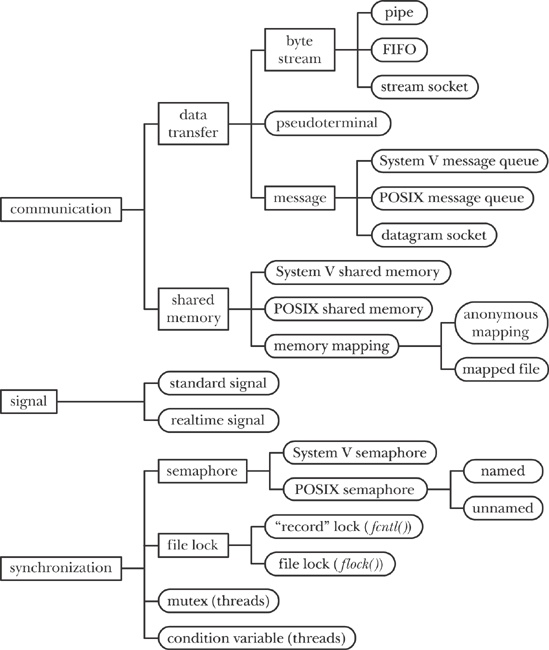This chapter presents a brief overview of the facilities that processes and threads can use to communicate with one another and to synchronize their actions. The following chapters provide more details about these facilities.
Figure 43-1 summarizes the rich variety of UNIX communication and synchronization facilities, dividing them into three broad functional categories:
Communication: These facilities are concerned with exchanging data between processes.
Synchronization: These facilities are concerned with synchronizing the actions of processes or threads.
Signals: Although signals are intended primarily for other purposes, they can be used as a synchronization technique in certain circumstances. More rarely, signals can be used as a communication technique: the signal number itself is a form of information, and realtime signals can be accompanied by associated data (an integer or a pointer). Signals are described in detail in Chapter 20 to Chapter 22.
Although some of these facilities are concerned with synchronization, the general term interprocess communication (IPC) is often used to describe them all.
As Figure 43-1 illustrates, often several facilities provide similar IPC functionality. There are a couple of reasons for this:
Similar facilities evolved on different UNIX variants, and later came to be ported to other UNIX systems. For example, FIFOs were developed on System V, while (stream) sockets were developed on BSD.
New facilities have been developed to address design deficiencies in similar earlier facilities. For example, the POSIX IPC facilities (message queues, semaphores, and shared memory) were designed as an improvement on the older System V IPC facilities.
In some cases, facilities that are grouped together in Figure 43-1 actually provide significantly different functionality. For example, stream sockets can be used to communicate over a network, while FIFOs can be used only for communication between processes on the same machine.
